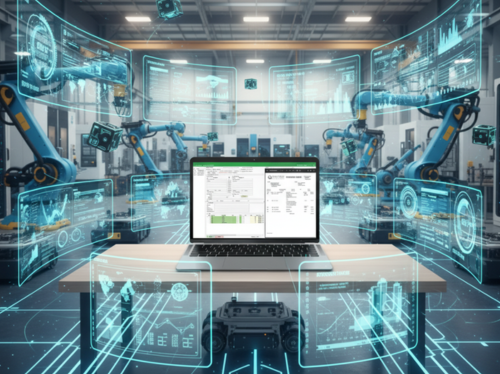Vehicle electrification specialist turns to FANUC cobots to increase productivity

Specialist electric vehicle battery manufacturer, Danecca, has invested in two FANUC collaborative robots to improve the accuracy and repeatability of its heat staking applications following a major customer order.
The battery manufacturer, founded in 2018 by ex-Jaguar Land Rover and National Grid engineer Danson Joseph, specialises in battery development, verification and validation, as well as rapid prototyping and production.
Following the successful purchase and integration of a FANUC M20iD 6-axis industrial robot (integrated with a TRUMPF PFO laser for welding electrical connections), the company has now invested in two state-of-the-art FANUC CRX 10iA collaborative robots.
Given the close proximity between operator and Robot, the lightweight CRX-10iA has been designed with safety front of mind. Movement automatically stops upon contact with humans or unexpected objects, and will instantly move back to avoid trapping. The CRX cobot range is certified according to the ISO 10218-1 and EN/ISO 13849-1 safety standard, and the smooth and elegant design avoids pinching and injury, making it an ideal partner for production workers.
Danecca purchased the two CRX cobots to improve the accuracy, repeatability and takt time of its heat staking process, while also freeing up more time for technicians to focus on value-added tasks.
James Hampshire, Electronics Engineer at Danecca, commented: “Heat staking has traditionally been a labour-intensive application for us, with long takt times that can become quite fatiguing for the operator when done manually. Following the successful tender for a demanding order, we quickly identified collaborative robots as a viable solution to work alongside our battery technicians to significantly increase our output without compromising on quality.”
James continued: “The CRX cobots now enable us to heat stake up to 23 units at any one time, and have helped to eradicate any inconsistencies. This is incredibly important as any irregularities in the process would render that particular unit redundant, adding unnecessary time and cost into the process. Not only have we seen a significant increase in repeatability and accuracy, but the takt time has also reduced by over 10 minutes per cycle.”
“From a programming perspective, the CRX cobots are incredibly intuitive to use and we know that once we have told it do something, it will do it and do it correctly. Looking to the future, we are working on connecting our cobots to the central mainframe PLC to control the HMI, as well as investigating the possibility of integrating 3D vision systems to automate the visual inspection process.”








